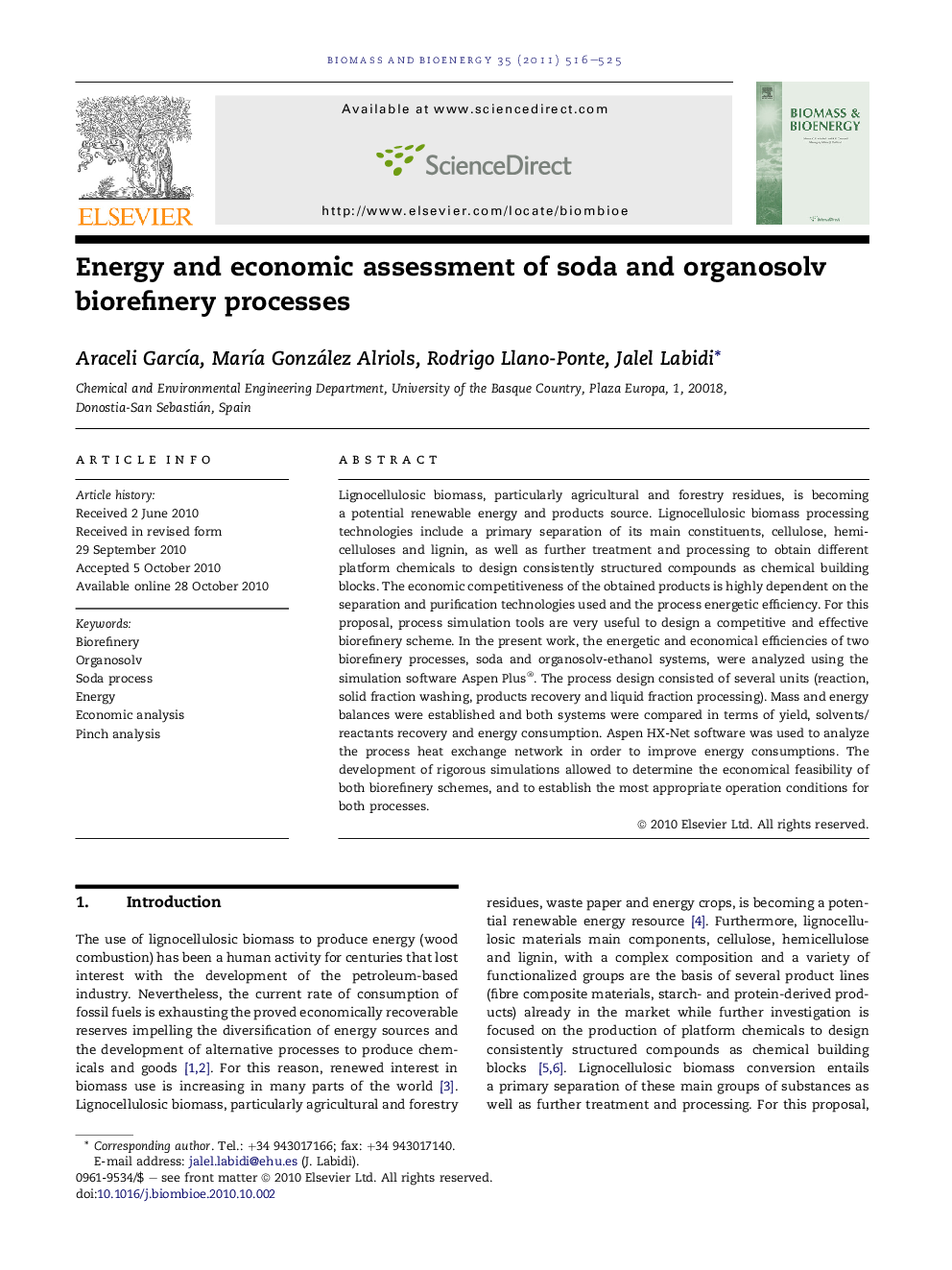| Article ID | Journal | Published Year | Pages | File Type |
|---|---|---|---|---|
| 678109 | Biomass and Bioenergy | 2011 | 10 Pages |
Lignocellulosic biomass, particularly agricultural and forestry residues, is becoming a potential renewable energy and products source. Lignocellulosic biomass processing technologies include a primary separation of its main constituents, cellulose, hemicelluloses and lignin, as well as further treatment and processing to obtain different platform chemicals to design consistently structured compounds as chemical building blocks. The economic competitiveness of the obtained products is highly dependent on the separation and purification technologies used and the process energetic efficiency. For this proposal, process simulation tools are very useful to design a competitive and effective biorefinery scheme. In the present work, the energetic and economical efficiencies of two biorefinery processes, soda and organosolv-ethanol systems, were analyzed using the simulation software Aspen Plus®. The process design consisted of several units (reaction, solid fraction washing, products recovery and liquid fraction processing). Mass and energy balances were established and both systems were compared in terms of yield, solvents/reactants recovery and energy consumption. Aspen HX-Net software was used to analyze the process heat exchange network in order to improve energy consumptions. The development of rigorous simulations allowed to determine the economical feasibility of both biorefinery schemes, and to establish the most appropriate operation conditions for both processes.
